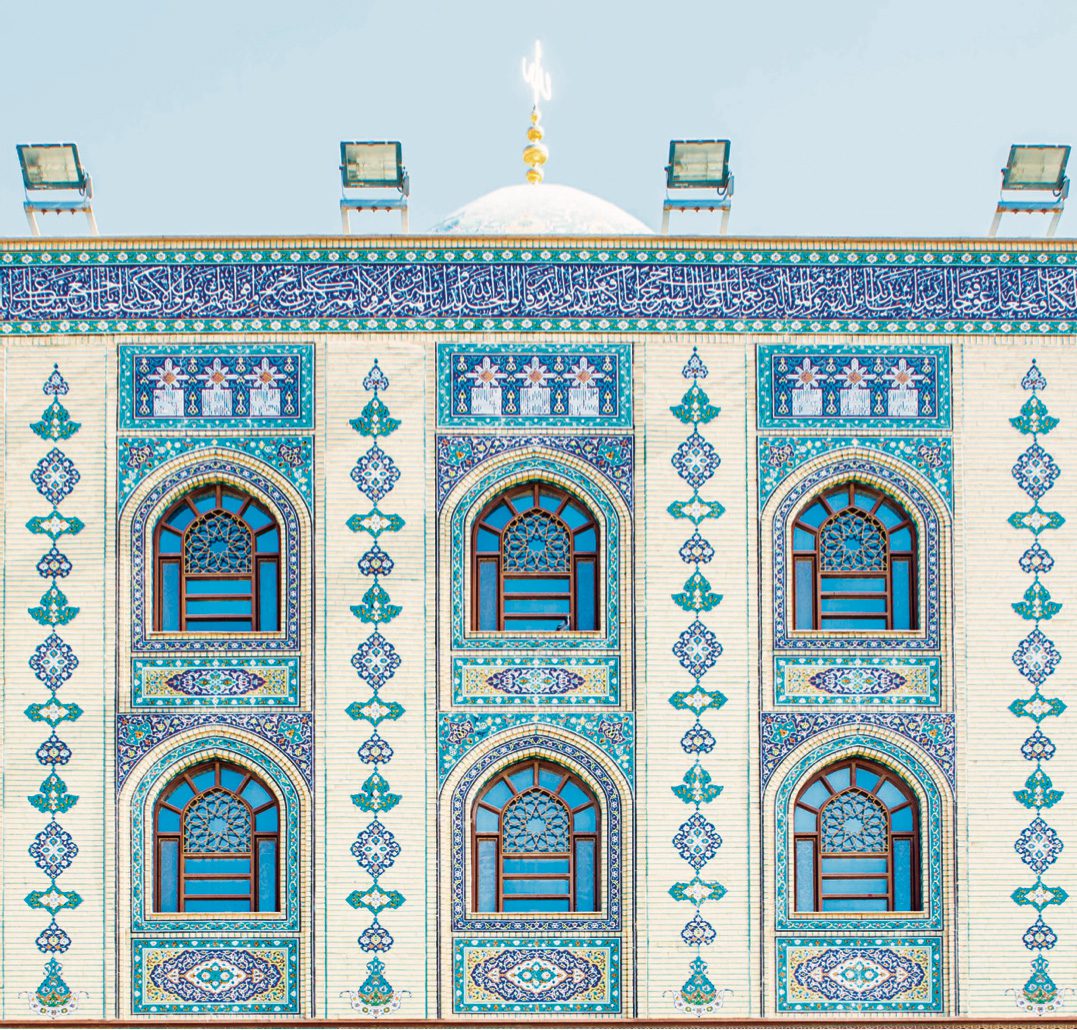Chartres, France
Illiers-Combray Station
This French train station is located in a town renamed after the famed writer Marcel Proust's fictional name for the village.

Photo Credit: Osama Sarm
Below these stunning blue tile mosaic windows and inlays is the name Najm Al-Imam, scripted in Arabic. Najm Al-Imam means “the Star Imam,” a title given to Muhammad Ibn al-Hasan Tūsī (1201–1274), a Persian scientist from Najaf, Iraq, where the school is located.
After Mecca and Medina, Najaf is the third-holiest site for Shia Muslims. Pilgrims gather here from across the world to pay respects to ‘Ali ibn Abi Talib (601–661), the first imam and spiritual founder of the Shia branch of Islam. Over the centuries, libraries, convents, and schools were built around his shrine, establishing the city as a center of religious scholarship.
The city has played a pivotal role in modern Islamic history for other reasons—among them having hosted Ayatollah Khomeini for his fourteen years of exile in Iraq, beginning in 1965. Later, Saddam Hussein targeted the shrines of the Shia holy city, and in 2003, an invasion by U.S. forces left Najaf in a shattered state.
But Najaf is being transformed and rebuilt, as evidenced by institutions like Najm al-Imam. At the center of this transformation remains the encrusted golden-domed shrine to Imam Ali, thanks to whom, as one Hadith puts it, the city remains a hallowed “gate of knowledge.” Today, the streets of Najaf are filled with scholars and pilgrims, as they have been for generations.

 32.0106646, 44.3265272
32.0106646, 44.3265272
Need an account? Sign up
This site is protected by reCAPTCHA and the Google Privacy Policy and Terms of Service apply.